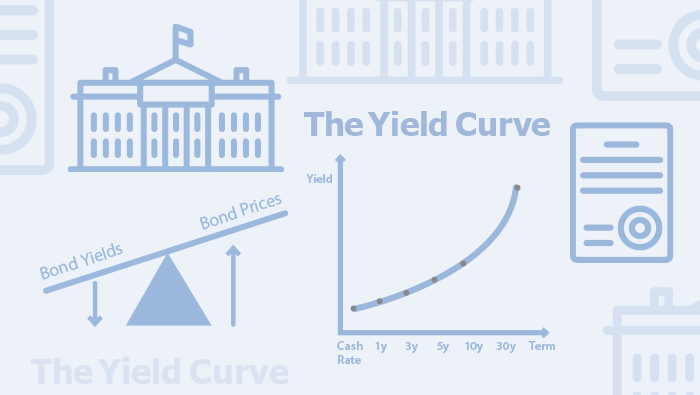Topic: Finance

Inflation-linked Financial Markets
Financial instruments with returns that are indexed to inflation allow market participants to hedge against or take positions on future inflation. Inflation-linked bond and swap markets in Australia are small and not very liquid relative to some other advanced economies. Nevertheless, pricing in these markets can provide valuable information about participants’ inflation expectations. Market measures of long-term inflation expectations have increased in many advanced economies since the COVID-19 pandemic. In Australia, this has brought expectations into closer alignment with the RBA’s inflation target.

Small Business Economic and Financial Conditions
The economic environment has been challenging for many small businesses over the past year. Growth in demand has slowed while input costs remain elevated, putting pressure on profitability – particularly for businesses reliant on discretionary consumer spending. Even so, profit margins remain around pre-pandemic averages for most small businesses. While access to credit remains a challenge for small businesses, many accumulated sizeable cash buffers during the pandemic, contributing to their resilience over the past few years. The unevenness in small business conditions has been reflected in some continuing to perform well, while others have had to draw down on cash buffers and an increasing share have entered insolvency. However, the number of insolvencies remains below its pre-pandemic trend on a cumulative basis. This article discusses small business conditions in Australia by drawing on information from the Reserve Bank’s 32nd Small Business Finance Advisory Panel, firm-level administrative data and other economic surveys.

The Australian Repo Market: A Short History and Recent Evolution
In 2019, the repurchase agreement (repo) market became the second largest onshore short-term wholesale funding market in Australia. In addition to its size, the range of participants and diversity of collateral used to obtain funds under repo has grown in recent years. As a result, the repo market provides valuable information about conditions in short-term wholesale funding markets. This article describes the recent growth in the Australian repo market and discusses the pricing in the repo market relative to other benchmarks.

The Committed Liquidity Facility: 2015–2022
The Reserve Bank’s Committed Liquidity Facility (CLF) was used from 2015–2022 to enhance the resilience of the banking system to times of liquidity stress. Banks must hold high-quality liquid assets (HQLA), including government securities, as a buffer against liquidity stress. Historically, the low level of government debt in Australia limited the amount that banks could reasonably hold, and so the CLF was introduced in 2015 as an alternative. Over time, however, the amount of government debt on issue and system liquidity increased significantly due to fiscal and monetary policy measures implemented to support the Australian economy during the COVID-19 pandemic. In response to this significant increase in HQLA, the size of the CLF was gradually reduced so that it was no longer in use at the beginning of 2023. This article provides an overview of the CLF and discusses its introduction and why it is no longer in use.

Recent Developments in the Semi-government Bond Market
The market for Australian state and territory government bonds is often referred to as the market for ‘semis’. Semi-government bonds are a key source of government funding and they form an important share of high-quality liquid assets in the Australian financial system. The COVID-19 pandemic, and state and territory government policies implemented in response, increased the size of the semi-government bond market significantly. During this period, there have also been compositional changes in the types of issuance and investors of semis. This article explores recent trends in the issuance, ownership and pricing of semi-government bonds.

Measuring Government Bond Turnover in Australia Using Austraclear Data
This article provides new estimates using Austraclear data for monthly turnover ratios for Australian Government Securities (AGS) and semi-government bonds (semis). Previous Reserve Bank estimates used Austraclear data that included repo transactions, as acknowledged at the time. In November 2021 Austraclear implemented a change to reporting standards that excluded repo transactions more effectively. This change allows for more accurate estimates of turnover for AGS and semis. The new turnover estimates are considerably lower, suggesting repo activity was a significant part of the previous estimates. The new estimates, with repo transactions excluded, better align with survey data on turnover published by the Australian Office of Financial Management.

Reading through the Lines: Price-setting Indicators from Earnings Calls
This article explores how information in earnings call transcripts from Australian firms can contribute to the Reserve Bank's understanding of their price-setting behaviour, as a complement to information gathered from the Bank's liaison program. A large language model is used to process and analyse earnings call transcripts and construct new sentiment indicators for input costs, demand, prices and supply shortages from them. These indicators, starting in 2007 and updated to capture the latest August earnings season, provide useful information about economic conditions and price-setting behaviour, including about developments during the recent period of unusually high inflation.

Recent Developments in Small Business Finance and Economic Conditions
The economic environment has become more challenging over the past year, including for small businesses. High inflation, slower growth of demand and difficulties in finding suitable labour have contributed to declines in small business conditions and confidence. Demand for business finance has slowed, consistent with the rise in interest rates and slower growth in economic activity. Small businesses report that accessing funding through banks remains a challenge. The article considers these recent developments, drawing on the discussions of the Small Business Finance Advisory Panel and information from the Bank’s liaison program.

Green and Sustainable Finance in Australia
Australia has committed to achieving net zero greenhouse gas emissions by 2050. This will require significant amounts of investment and financing as we move away from a carbon-intensive economy. Prior to the COVID-19 pandemic, productivity growth in Australia and other advanced economies had been low, because business dynamism, job mobility, global trade and policy reform all slowed. Over the past few years, the pandemic and other shocks distorted productivity outcomes. Even if these shorter term fluctuations wash out, the longer term (and apparently structural) weakness in productivity growth could persist. This would have implications for the rate of nominal wages growth that is consistent with inflation returning to the target band. This article discusses the trends in Australia’s productivity growth before, during and since the pandemic and the implications for the economic outlook.

Syndicated Lending
Syndicated lending involves a group of lenders providing a single loan to one borrower. This article considers the purposes and workings of syndicated loans in the Australian market, and the advantages of this type of lending for both lenders and borrowers. It finds that syndicated loans are a significant source of funding for large Australian businesses and for borrowers with large financing needs, especially as such loans are often more accessible and flexible than public debt markets. For lenders, syndication allows them to diversify their exposures, as well as to monitor loans and negotiate covenants efficiently.

Developments in Banks' Funding Costs and Lending Rates
Banks’ funding costs rose over 2022, driven by increases in the cash rate and in expectations for the future path of the cash rate. In turn, lending rates have increased considerably for the first time in over a decade. The increases in the average rate charged on all outstanding loans was limited by the large share of fixed-rate housing loans and ongoing competition in housing lending. This article updates previous research published by the Reserve Bank on developments in banks’ funding costs and lending rates.

Developments in Foreign Exchange and Over-the-counter Derivatives Markets
This article discusses the key results from the 2022 Triennial Central Bank Survey of Foreign Exchange and Over-the-counter Derivatives Markets. Global activity in foreign exchange (FX) markets increased over the three years to April 2022, driven by increased turnover of FX swaps with short maturities and trading between dealers. The volume of FX trading activity in the Australian market also grew, although this was largely driven by increased trading between related parties. The Australian dollar was the sixth most traded currency globally, down from fifth in 2019. Turnover of over-the-counter (OTC) interest rate derivatives declined globally, reflecting the transition away from the London interbank offered rate (Libor); however, activity increased in the Australian OTC interest rate derivative market, reflecting an increase in turnover of interest rate swaps. For Australian banks, the value of OTC derivatives increased sharply, driven by interest rate and commodity derivatives.

The RBA and AOFM Securities Lending Facilities
Australian Government Securities (AGS) play an important role in the transmission of monetary policy given that yields on these securities provide a benchmark for other interest rates across the economy. The Bank has a large amount of AGS and ‘semi-government’ bonds issued by state and territory borrowing authorities (semis) on its balance sheet as a result of purchases to support the economy through the COVID-19 pandemic. To support the efficient functioning of these markets, the Bank operates a securities lending facility (SLF) from which eligible counterparties can borrow AGS and semis; the Bank also operates an SLF on behalf of the Australia Office of Financial Management (AOFM). The use of these SLFs picked up noticeably following the end of the Bank’s yield target and bond purchase program. This article discusses these facilities in detail, including why market participants might use them and the recent increase in borrowing.

The Current Climate for Small Business Finance
Economic conditions for small and medium enterprises (SMEs) have been relatively strong since the second half of 2021, and demand for business finance is high. However, the environment remains challenging and uncertain, and interest rates on loans for SMEs are rising from historical lows. Small businesses continue to report that accessing funding through banks is a challenge, although new lenders and products are providing alternative sources of finance. The article considers these recent developments, drawing in particular on the discussions of the Small Business Finance Advisory Panel, which met in July this year.

Trends in Australian Banks' Bond Issuance
Bonds account for around 10 per cent of Australian banks' funding, and bonds issued by banks account for about half of the non-government bond market. The Australian bank bond market is primarily driven by the five largest banks, which issue most of the banks' bonds. This article explores trends in Australian banks' senior unsecured bond issuance since the global financial crisis. The COVID-19 pandemic, and the policies implemented in response, significantly influenced bank bond issuance. In particular, banks' bond issuance declined for a period as they accessed funds through the Reserve Bank's Term Funding Facility; however, issuance has increased recently as the economy has recovered from the initial phase of the pandemic.

Fallbacks for BBSW Securities
The bank bill swap rate (BBSW) is an important short-term benchmark interest rate for Australian financial markets across various maturities. It is a robust benchmark based on a liquid market. However, it is possible that, at some point in the future, BBSW might no longer be robust. Market participants need to be prepared for the possibility that BBSW, or at least some BBSW tenors, cease to be published. To do so, participants should include a ‘robust, reasonable and fair’ fallback to another interest rate in their financial contracts. To promote appropriate use of fallbacks, the Reserve Bank will only accept securities referencing BBSW issued after 1 December 2022 as collateral in its domestic market operations if those securities include such a fallback. The article explains this change and how participants can prepare for the contingency of BBSW ceasing to exist.

Developments in Banks' Funding Costs and Lending Rates
This article updates previous Reserve Bank research on the ways in which developments in the composition and pricing of banks' funding sources have affected their overall cost of funds and influenced lending rates. Banks' funding costs declined a little over 2021 – after falling substantially in the previous year – supported by the Reserve Bank's policy measures. In aggregate, lending rates declined by more than funding costs. As a result, the major banks' average interest rate spread narrowed over the year. The decline in the aggregate lending rate primarily reflected strong price competition and ongoing refinancing activity, particularly in housing lending.

Australian Money Markets through the COVID-19 Pandemic
Money markets are used by banks and other entities to borrow and lend funds for short terms, and are central to the implementation and transmission of monetary policy in Australia. It is important that these markets function effectively in all economic conditions, including during the uncertain times of the COVID-19 pandemic. This article examines how the various money markets – including the cash, repo, bank bills, FX swaps and Treasury Notes markets – responded to events of the past two years. Ultimately it finds that Australian money markets have generally functioned well over this time. Short-term funding has remained readily available from these markets, as the RBA has substantially increased the supply of Exchange Settlement balances and investors have continued to desire safe and liquid investments. Over the past two years, money market rates have declined significantly as a result of the decreases in the cash rate target and the increased supply of Australian dollars in these markets.

Australian Securities Markets through the COVID-19 Pandemic
The COVID-19 pandemic disrupted many parts of the Australian economy, including securities markets. These markets play an important role in our economy, including as a source of funding for firms and in the transmission of monetary policy. This article describes how Australian markets for private securities weathered the impact of the COVID-19 shock. As the pandemic escalated, volatility in securities markets increased sharply, and some assets became difficult or costly to trade. The Reserve Bank, along with federal, state and territory governments in Australia, introduced policies to help support the economy and to ensure financial institutions were able to continue lending to households and businesses. These measures helped to support conditions in securities markets, which improved substantially from mid-2020. In turn, the recovery in securities markets helped to support the availability of low-cost funding for Australian businesses and households. Overall, the volatility in these markets at the beginning of the pandemic was brief when compared with the global financial crisis.

Recent Changes to the Reserve Bank's Liquidity Operations
The Reserve Bank's policy measures to support the economy in the wake of the COVID-19 pandemic have significantly increased liquidity in the banking system. Consequently, market participants have had less need to use some of the Reserve Bank's liquidity operations and facilities. In response, the Bank reduced the frequency of its regular open market liquidity operations from daily to weekly. It also removed the requirement for financial institutions that make payments outside of business hours to source additional liquidity from the Bank via open standing facility repos so long as they are holding sufficient Exchange Settlement balances. This article outlines these recent operational changes.

An Assessment of the Term Funding Facility
The Term Funding Facility (TFF) was announced by the Reserve Bank Board in March 2020 as part of a comprehensive policy package to support the Australian economy in response to the COVID-19 pandemic. The facility has provided low cost three-year funding to banks operating in Australia against high quality collateral. The TFF closed to new drawdowns at the end of June 2021, so the last of this funding will not mature until mid 2024. This article provides an overview of TFF usage by banks, considers the future refinancing task for the banking sector, and provides an assessment of the TFF with respect to its primary policy goals.

Small Business Finance and COVID-19 Outbreaks
Economic conditions for small and medium-sized enterprises (SMEs) improved in the second half of 2020 and early 2021, although measures to contain the recent outbreaks of COVID-19 have affected firms in much of Australia. SMEs are being supported by policy measures, including a number of initiatives that continue to encourage lending to smaller firms. Nonetheless, the volume of SME lending has been little changed for some time, and access to finance continues to be a challenge for small businesses.

Examining the Causes of Historical Failures of Central Counterparties
Although historically rare, the failure of a central counterparty (CCP) could severely disrupt and destabilise the financial system. This has driven a global push to implement resolution regimes so that authorities can support the continuity of critical functions of a distressed CCP. This article examines 3 CCP failures to identify common causes of failure that could help authorities prevent or prepare for a resolution. It finds that while there are some common causes of failure in the episodes considered, they have largely been addressed by improvements in CCP financial risk management in recent years.

Corporate Bonds in the Reserve Bank's Collateral Framework
In May 2020, the Reserve Bank broadened the range of corporate bonds accepted as collateral under repurchase agreements (repo) from AAA-rated to investment grade (BBB- or above). This change in policy increased the universe of potentially eligible securities for domestic market operations by around $150 billion, of which the Reserve Bank has received applications for and granted eligibility to around $50 billion. In assessing applications for repo eligibility, a number of features – including subordination, embedded options and legal risks – required further investigation to ensure the securities remained within the Bank's risk appetite. Corporate securities remain a small share of total eligible collateral. While usage of corporate bonds in repos with the Bank has been relatively modest to date, the policy change to broaden may have provided some support to the Australian corporate bond market.

The Committed Liquidity Facility
The Reserve Bank provides the Committed Liquidity Facility (CLF) to enhance the resilience of the banking system in times of liquidity stress. Banks need to hold high-quality liquid assets (HQLA), including government securities, as a buffer against liquidity stress. However the low level of government debt in Australia limited the amount they could reasonably hold. The CLF was introduced in 2015 as an alternative. Since 2019, the size of the CLF has been reduced because the amount of government debt on issue has increased significantly. The fee charged for access to the CLF has also been increased to ensure that banks have an incentive to manage their liquidity risk appropriately. The size of the CLF and the associated fee have been adjusted in a measured way to ensure a smooth transition.

Monetary Policy, Liquidity, and the Central Bank Balance Sheet
In response to the COVID-19 pandemic, the Reserve Bank deployed a number of monetary policy tools, including some new measures, to support the economy and address disruptions to the smooth functioning of financial markets. This new mix of policy tools has changed how the Reserve Bank implements monetary policy, and has significantly increased the size of the Bank's balance sheet and the amount of liquidity in the banking system.

An Initial Assessment of the Reserve Bank's Bond Purchase Program
This article provides an initial assessment of the effect of the Reserve Bank's bond purchase program on government bond yields. Overall, we estimate that the program has reduced longer-term Australian Government Security (AGS) yields by around 30 basis points and lowered the spread of state and territory bond yields to AGS yields by 5 to 10 basis points, relative to where they would otherwise have been. This reduction in yields occurred partly in anticipation of the program and partly at its announcement. Bond yields have risen noticeably since the program was announced, but this does not imply that the impact of the program was transitory: many factors contribute to changes in bond yields, and our assessment is that bond purchases serve to hold yields lower than they would otherwise have been over an extended period. The bond purchase program has not had any substantial negative impact on the functioning of government bond markets.

Developments in Banks' Funding Costs and Lending Rates
Banks' funding costs declined to historical lows over 2020, reflecting the monetary policy measures announced by the Reserve Bank. In aggregate, lending rates have fallen in line with banks' borrowing costs, such that the major banks' average interest spreads were little changed over the year.

Australia's Economic Recovery and Access to Small Business Finance
Economic conditions for many small businesses in Australia began to improve in the second half of 2020 alongside the broader recovery from the severe economic disruption caused by the COVID-19 pandemic. While small businesses' access to finance from lenders tightened in the early stages of the pandemic, various policy measures were provided to help support the provision of credit. However, lending to small businesses remains little changed. Businesses have been reluctant to take on more debt in an uncertain environment and, at the same time, many have been able to make use of a range of temporary measures that have supported revenues or allowed for deferral of payments.

Shadow Financing in China
In 2016, Chinese authorities launched a campaign to reduce risks in China's shadow finance system. The campaign managed to reduce the size of China's shadow finance system, which has declined from over 60 per cent of GDP to around 40 per cent. This has been a positive development from a systemic risk perspective. Regulatory reform has improved the visibility authorities have over the financial system and improved their ability to target policies to address emerging risks. However, savers now have fewer investment options that offer attractive returns, while financial intermediaries have faced increased pressures on both the assets and liabilities sides of their balance sheets. In addition, the supply of credit has been curtailed in sectors that rely on shadow finance. The COVID-19 pandemic has further highlighted the difficult trade-off policymakers face between containing longer-term financial system risks while supporting economic growth in the near term.

Secondary Market Liquidity in Bonds and Asset-backed Securities
Liquidity is an important measure of health and stability in financial markets. This article assesses liquidity in markets that trade Australian fixed income securities by analysing market turnover using data for the period 2015–17, which was one of relative calm. We find heterogeneity across these markets. Australian and State Government bonds have higher turnover than other securities. Turnover was generally higher for larger bond lines, but not universally so. In particular, there is relatively high turnover in a number of small asset-backed security lines.

Governance of Financial Market Infrastructures
Good governance is critical to delivering effective risk management outcomes. Several high-profile reports have underscored this point in recent years, finding governance issues to be at the heart of poor compliance and risk management outcomes in the financial industry. Given the key role that financial market infrastructures (FMIs) play in supporting efficient and stable markets, the RBA has a strong interest in promoting good governance within these entities. This article explores aspects of FMI governance and how governance arrangements can help promote the safe and effective delivery of FMI services.

The Term Funding Facility
The Reserve Bank's Term Funding Facility (TFF) was announced in March as part of a monetary policy package to reduce funding costs across the economy and to support lending, especially to small and medium-sized businesses. Most of the initial allocations of the TFF were drawn upon by the time the first phase of the facility closed in September. In September, the Reserve Bank Board adjusted the TFF in response to economic conditions, expanding and extending the facility and in November it lowered the interest rate on new drawings. Drawdowns from the TFF have increased the Reserve Bank's balance sheet significantly and the facility has contributed to an easing in financial conditions. As a result of the Reserve Bank's policy measures, including the TFF, bank funding costs and lending rates are at historically low levels.

The COVID-19 Outbreak and Access to Small Business Finance
The COVID-19 pandemic has adversely affected the business sector. Overall, small businesses have been disproportionately affected because they are more likely to be in industries that have been harder hit by the pandemic. Demand for new loans appears to be weak, probably because businesses are reluctant to take on debt given heightened uncertainty about the economic outlook. The various short-term initiatives to support businesses’ cash flows are also likely to have dampened the immediate demand for credit. At the same time, access to finance continues to be a challenge for small businesses. Banks have tightened their lending practices in recent years and are more cautious about lending to businesses that have been significantly affected by the pandemic.

Insights from the New Economic and Financial Statistics Collection
The Reserve Bank has worked with the Australian Bureau of Statistics (ABS) and the Australian Prudential Regulation Authority (APRA) to modernise and expand data collected from Australia’s financial sector. This article discusses some of the insights from the data, known as the Economic and Financial Statistics (EFS). The EFS collection has been used to monitor developments in the provision of finance to the Australian economy since the onset of the COVID-19 pandemic. For instance, new data on housing interest rates shows that there has been a decline in these rates alongside the package of measures implemented by the Reserve Bank in March this year.

Government Bond Market Functioning and COVID-19
The market for Australian Government Securities is a critical fixed income market in Australia, including because it serves as a pricing benchmark for many other interest rates in the economy. The extreme economic and financial uncertainty caused by the onset of the COVID-19 pandemic led to this market becoming dysfunctional, with investors unable to transact in reasonable size. In response to the pandemic, on 19 March 2020 the Reserve Bank announced a number of new policy measures, which, among other things, have been successful in restoring the functioning of government bond markets. This article discusses various measures of market functioning, their deterioration, and subsequent improvement.

Managing the Risks of Holding Self-securitisations as Collateral
Self-securitisations are structured pools of assets, such as residential mortgages, created by banks specifically to use as collateral to access liquidity from the Reserve Bank. The ability of banks to transform illiquid mortgages into liquid assets improves overall liquidity in the financial system. Some financial risks the Reserve Bank faces by holding self-securitisations as collateral differ from other collateral assets (such as government and corporate securities). Unlike these assets, self-securitisations are not currently traded on any public market, and the risks of the self-securitisation are related to the risks of the bank using it as collateral. The Reserve Bank applies a series of additional controls to self-securitisations accepted as collateral to protect against potential financial losses.

Transactional Banking at the RBA in Extraordinary Times
The Reserve Bank of Australia (RBA) is the banker to the Commonwealth of Australia, supporting the Australian Government in its daily banking needs. During extraordinary times, such as the bushfires of the 2019/20 summer season or the current COVID-19 pandemic, demands on banking services are heightened as additional payments are made to Australians who require funds immediately. By modernising its products and service offerings and the underlying technology, the RBA has ensured payment and banking systems are fit to perform these tasks securely and reliably. In the past, additional payments during extraordinary times required additional effort and at times unconventional means. Today, government payments can be made seamlessly, even during crisis situations, ensuring funds are received without unnecessary delays.

Developments in Banks' Funding Costs and Lending Rates
Banks’ funding costs declined over 2019, driven by reductions in the cash rate. Lenders passed most of the decrease in funding costs through to interest rates on mortgages and business loans. Funding costs and lending rates are at historical lows.

The Road to Australian Dollar Funding
A key feature of Australia’s financial system is that nearly all liabilities are denominated in, or hedged into, Australian dollars. A pre-condition for this state of affairs is that investors are willing to hold Australian dollar-denominated assets. Investor confidence in Australian dollar assets is supported by Australia’s sound institutional framework, history of positive macroeconomic outcomes, and well-functioning financial system. Australia’s journey to funding in its own currency spanned nearly a century and involved various costs. Today, these funding arrangements confer substantial benefits to the Australian economy, including by reinforcing the same positive economic, financial and institutional outcomes that made Australian dollar funding possible in the first place.

Developments in Foreign Exchange and Over-the-counter Derivatives Markets
Global activity in foreign exchange (FX) and over-the-counter (OTC) derivatives markets
increased over the three years to April 2019.
Continuing a trend observed over prior years, growth in turnover of foreign exchange
derivatives outpaced growth in spot market activity. Trading between dealers
and other financial institutions accounted for a larger share of market activity
than trading between FX dealers.
The Australian dollar remained the fifth most traded currency globally, although
the volume of FX trading activity in the Australian market was little changed.
Over the past three years, the growth of global and Australian OTC derivatives
markets has been driven by interest rate derivatives.

Bank Balance Sheet Constraints and Money Market Divergence
The spread between key Australian money market interest rates has widened and become more volatile in recent years. While this might seem to imply scope to profit from arbitrage – by borrowing at a low rate to invest at a higher one – banks have additional balance sheet considerations that need to be taken into account. We find that money market trades have generally not been profitable for the four major banks since the financial crisis. This is partly because debt funding costs have fallen by less than money market returns. In addition, equity funding, which is more expensive than debt, has increased. Consequently, the incentive for banks to arbitrage between money market interest rates has fallen. We also note that banks tend to prefer more profitable lines of business, such as lending for residential housing, over the narrow margins implied by money market arbitrage.

The Committed Liquidity Facility
The Reserve Bank provides the Committed Liquidity Facility (CLF) as part of global reforms to improve the resilience of the banking system. The CLF is required due to the low level of government debt in Australia. This limits the amount of high-quality liquid assets that financial institutions can reasonably hold as a buffer against periods of stress. Under the CLF, the Reserve Bank commits to providing a set amount of liquidity to institutions, subject to them satisfying several conditions. These include having paid a fee on the committed amount. No financial institution has needed to draw upon the CLF in response to a period of financial stress.

The Australian Equity Market over the Past Century
This article describes developments in the Australian equity market over the past century, drawing in part from a newly compiled historical dataset which begins in 1917. Over the past one hundred years, the market has increased in size relative to the economy, while its composition by industry also changed substantially. The data also provide new evidence that historical returns on Australian equities – and therefore the equity risk premium – are lower than previously thought.

Developments in Banks' Funding Costs and Lending Rates
Banks' funding costs increased a little over 2018, driven by a rise in the cost of wholesale funding linked to money market rates, but with some offset from reductions in the cost of retail deposits. Most lenders passed the increase in funding costs through to their lending rates, including for mortgages. Nevertheless, funding costs and lending rates remain low by historical standards.

Updates to Australia's Financial Aggregates
The financial aggregates for Australia are important data compiled by the Reserve Bank that are used by policymakers to assess financial and economic activity of households and companies. From August 2019, the Reserve Bank will publish the financial aggregates using an improved framework based on a better data collection. This will enhance the quality of information available to policymakers and the wider community. This article gives an overview of the main changes.

The Reserve Bank's Securitisation Dataset
The Reserve Bank's Securitisation Dataset contains timely and detailed data on each and every one of the mortgages underlying Australian residential mortgage-backed securities (RMBS). This dataset allows the Bank to better analyse the structure of, and monitor developments in, the mortgage market. In order to examine how representative the dataset is of the wider mortgage market we compare the dataset to less frequent but more comprehensive data from the Australian Prudential Regulation Authority (APRA). We find that the Securitisation Dataset provides excellent coverage of the collateral underpinning the RMBS market, and is representative of the wider Australian mortgage market across a number of dimensions. We then use these data to explore trends in mortgage interest rates.

A Forward-looking Model of the Australian Dollar
The exchange rate is an important mechanism that helps the economy adjust to external shocks.This article analyses the key determinants of the Australian dollar – the terms of trade and differences between interest rates in Australia and other advanced economies. It emphasises that ‘forward-looking’ measures of these determinants are important for capturing movements of the observed real exchange rate. In particular, they capture longer-term movements in the real exchange rate, including around key turning points, for instance during the global financial crisis.

Understanding Exchange Rates and Why They Are Important
Exchange rates are important to Australia's economy because they affect trade and financial flows between Australia and other countries. They also affect how the Reserve Bank conducts monetary policy. This article outlines how exchange rates are measured, the different types of exchange rate regimes, the factors that influence the exchange rate and how changes in the exchange rate affect the economy.

Money in the Australian Economy
Money forms part of our everyday lives and is integral to the smooth functioning of the financial system and the real economy; however, discussions of what money is and how it is created are generally left to economics textbooks. This article provides an introduction to the concept of money and describes how it is created and measured. We also discuss what these measures can tell us about economic activity.

Interest Rate Benchmarks for the Australian Dollar
Interest rate benchmarks are widely relied upon in global financial markets. They are referenced in contracts for derivatives, loans and securities. They are also used by market participants to value financial instruments, and by investment funds as benchmarks for assessing their performance. The key interest rate benchmarks for the Australian dollar are the bank bill swap rates (BBSW) and the cash rate. This article provides an overview of these benchmarks, and the reforms that have been undertaken over recent years to make them more robust.

The Australian OTC Derivatives Market: Insights from New Trade Repository Data
Over-the-counter (OTC) derivatives have played a significant role in episodes of financial stress, including the global financial crisis. However, because these derivatives are not traded on exchanges, detailed information about them has not generally been available. Newly available trade-level data coming from trade repositories can now facilitate a closer look at these markets than was possible before. This article focusses on OTC interest rate derivatives. Central counterparties (CCPs) have become much more important, in large part because of G20 reforms to increase the central clearing of OTC derivatives. Nonetheless, Australian banks still have significant exposures to other counterparties, including foreign banks. In aggregate, Australian banks hold a variety of offsetting single-currency interest rate derivatives, and use cross-currency swaps to hedge exchange rate risks.

Developments in Banks' Funding Costs and Lending Rates
This article updates previous Reserve Bank research on the composition and pricing of banks' debt funding and lending rates. The major banks' debt funding costs declined a little over 2017, primarily driven by a decline in the cost of deposits. Over the same period, overall lending rates were little changed, with higher household lending rates partly offset by lower business lending rates.
The Availability of Business Finance
Access to business finance has improved markedly since the global financial crisis, and debt-servicing costs are near historic lows. Nevertheless, small businesses continue to face challenges accessing finance. This article looks at the sources and availability of finance for Australian businesses. It also explores several innovations, such as comprehensive credit reporting and alternative finance platforms. These could make financing more accessible for small businesses in the start-up or expansion phase.
The Neutral Interest Rate
Central banks monitor the neutral interest rate for a number of reasons, a key one being that it provides a benchmark for assessing the stance of monetary policy. This article describes the determinants of the neutral interest rate and discusses its trends in Australia over recent decades. We estimate that Australia's neutral interest rate has declined by 150 basis points since 2007 and is currently around 1 per cent. However, because we cannot observe the neutral rate directly, there is considerable uncertainty around these estimates. The fall over the past decade is largely attributable to a decline in the economy's potential growth rate and an increase in risk aversion of households and firms.
Structural Liquidity and Domestic Market Operations
The Reserve Bank is a net supplier of liquidity to the Australian financial system. This reflects demand for the Reserve Bank's liabilities from its customers, as well as the asset allocation decisions of the Reserve Bank. The key drivers of variations in the amount of liquidity supplied by the Reserve Bank have been fluctuations in government deposits and the demand for banknotes. The Reserve Bank meets the demand for liquidity through its domestic market operations.
The Australian Exchange-traded Funds Market
Assets under management in the Australian exchange-traded funds (ETF) market have more than tripled over the past four years to around $25 billion. ETFs enable investors to gain exposure to a wide range of assets at relatively low cost. Australian ETFs have generally replicated their investment benchmarks closely and deviations have tended to be small and temporary. However, there are some potential risks associated with investing in ETFs.
Developments in Banks' Funding Costs and Lending Rates
This article updates previous Reserve Bank research on the ways in which developments in the composition and pricing of banks' debt funding have affected their overall cost of funds and influenced lending rates. Major banks' outstanding funding costs and lending rates declined in 2016, following two reductions in the cash rate. However, lending rates and funding costs did not decline by as much as the cash rate. This was largely due to an increase in the cost of deposit funding, which reflected competition between financial institutions for deposits.
Developments in Foreign Exchange and OTC Derivatives Markets
The Bank for International Settlements (BIS) conducts the Triennial Central Bank Survey of Foreign Exchange and Over-the-counter (OTC) Derivatives Markets Activity (Triennial Survey) to collect information about the size and structure of these markets. The 2016 survey results suggest that global activity in these markets declined since the previous survey, partly reflecting higher-than-usual activity in April 2013 and exchange rate movements. Over the same period, activity in the Australian foreign exchange market declined markedly in US dollar terms, but only modestly in Australian dollar terms. For Australian banks, the value of OTC derivatives outstanding continued to increase, though gross credit exposure declined.
Developments in the Australian Repo Market
The market for repurchase agreements (repos) – where cash is borrowed and lent using securities as collateral – plays an important role in the implementation of monetary policy and as a source of finance for the bond market. The Reserve Bank has commenced publishing more detailed data about the repo market. This article introduces these data and highlights some key developments. The domestic repo market has grown considerably in recent years, with non-residents emerging as prominent borrowers of cash in return for securities. The spread between repo rates and expectations for the cash rate has risen noticeably over the past couple of years. This increase appears to be linked to developments in the foreign exchange swap market as well as arbitrage related to the Australian bond futures market. Demand from non-residents to fund trading activities and, to a lesser extent, regulatory requirements have contributed to the increase in repo rates.
The Kangaroo Bond Market
Australian dollar-denominated bonds issued by non-resident entities in Australia are referred to as Kangaroo bonds and represent a significant share of the Australian bond market. Issuance has generally been dominated by highly rated issuers such as supranational and quasi-sovereign agency entities; more recently there has been an increase in non-financial corporate issuance, albeit from a low base. Kangaroo bond issuance has increased substantially since the early 2000s, supported by the global demand for highly rated and relatively high-yielding Australian dollar-denominated assets. Kangaroo bonds have been attractive to non-resident issuers as they enable non-residents to diversify their funding bases and have relatively favourable issuance costs (including hedging costs) compared with issuance in other currencies. Kangaroo issuers play an important role in the cross-currency swap market because, by converting the Australian dollars they raise into foreign currency, they act as indirect counterparties for Australian corporations looking to convert funds raised offshore into Australian dollars.
Developments in Banks' Funding Costs and Lending Rates
This article updates previous Reserve Bank research on how developments in the composition and pricing of banks' funding have affected their overall cost of funds and influenced lending rates. Major banks' outstanding funding costs fell notably in 2015, following two reductions in the cash rate. The spread between the major banks' outstanding funding costs and the cash rate also narrowed over 2015. This was due to lower costs of deposits and a more favourable mix of deposit funding, as well as lower wholesale funding costs. Lending rates declined in the first half of 2015, reflecting changes in the cash rate and competition for lending, before lending rates increased for housing in the second half of the year; business lending rates are at historically low levels.
Trends in Australian Corporate Financing
The aggregate funding behaviour of the Australian non-financial corporate sector has been fairly steady over the period since the global financial crisis. However, this masks the quite divergent experiences of the resources and non-resources sectors. Substantial net investment by resources companies has been funded primarily by operating cash flows, while external funding has been modest, mainly comprising borrowing to offset the effect of movements in commodity prices on internal funding. Net investment by non-resources companies has been relatively subdued, with internal funds broadly sufficient to meet this expenditure. Overall, leverage for Australian-listed companies remains relatively low, internal funding continues to cover the bulk of financing needs and companies generally appear to retain good access to external finance in its various forms.
Firms' Investment Decisions and Interest Rates
Firms typically evaluate investment opportunities by calculating expected rates of return and the payback period (the time taken to recoup the capital outlay). Liaison and survey evidence indicate that Australian firms tend to require expected returns on capital expenditure to exceed high ‘hurdle rates’ of return that are often well above the cost of capital and do not change very often. In addition, many firms require the investment outlay to be recouped within a few years, requiring even greater implied rates of return. As a consequence, the capital expenditure decisions of many Australian firms are not directly sensitive to changes in interest rates. Furthermore, although both the hurdle rate of return and the payback period offer an objective decision rule on which to base expenditure decisions, the overall decision process is often highly subjective, so that ‘animal spirits’ can play a significant role.
Developments in Banks' Funding Costs and Lending Rates
This article updates previous Reserve Bank research on how developments in the composition and pricing of banks' funding have affected their overall cost of funding and the setting of lending rates. The main finding is that the spread between the major banks' outstanding funding costs and the cash rate narrowed a little over 2014. This was due to slightly lower costs of deposits combined with a more favourable mix of deposit funding. The contribution of wholesale funding to the narrowing was marginal as more favourable conditions in long-term debt markets were mostly offset by a rise in the cost of short-term debt. Lending rates declined a little more than funding costs, reflecting competitive pressures.
Market Making in Bond Markets
In November 2014, the Committee on the Global Financial System (CGFS) published a report on developments in market making and proprietary trading in fixed income and related derivative markets (CGFS 2014). The aim of the report was to facilitate a better understanding of how ongoing changes in these activities may affect liquidity in markets and to assess whether these changes are driven by market or regulatory forces. The report found that there have been changes in liquidity conditions across markets, including in Australia, with market activity becoming more concentrated in the most liquid instruments and declining in less liquid ones. These changes in market-making activity have been driven by both market-based developments and regulatory change. To the extent that liquidity risks were underpriced in the period prior to the global financial crisis, many of the subsequent changes in market structure and the increase in liquidity premiums are welcome. However, with the changes still ongoing, bond issuers and investors will be likely to have to make further adjustments to the way in which they operate in fixed income markets and manage liquidity risks.
Foreign Investment in Australian Commercial Property
Foreign investors' demand for commercial buildings in Australia has been strong in the past few years, as captured by their rising share of transaction values. Foreigners have generally purchased established properties, although there has also been some interest in developing new commercial buildings or converting existing buildings to apartments. These purchases have probably boosted net financing to the sector and also construction activity.
Trading in Treasury Bond Futures Contracts and Bonds in Australia
Treasury bond futures are a key financial product in Australia, with turnover in Treasury bond futures contracts significantly larger than turnover in the market for Commonwealth Government securities (CGS). Treasury bond futures contracts provide a wide variety of market participants with the ability to hedge against, or gain exposure to, interest rate risk. This article discusses some of the features of the Treasury bond futures contract, and how the contract is used to facilitate hedging activities and management of bond inventories by bond dealers.
Developments in Banks' Funding Costs and Lending Rates
This article updates previous Reserve Bank research on how developments in the composition and pricing of banks' funding have affected their overall cost of funding and the setting of lending rates (Deans and Stewart 2012; Robertson and Rush 2013). The main findings are that the absolute levels of banks' funding costs and lending rates have fallen over the past year, and spreads between these rates and the cash rate have narrowed marginally. The decline in these spreads largely reflects the shifts in the composition of banks' funding liabilities and the narrowing of wholesale debt spreads. Lending rates have tended to move in line with funding costs over the past 12 months.
New Measures of Australian Corporate Credit Spreads
Australian corporations access bond markets both domestically and offshore. Despite this, there is a lack of publicly available data on bond market conditions faced by non-financial corporations (NFCs). This gap in the data is particularly apparent at longer maturities where the low level of bond issuance, especially in the domestic market, makes it difficult to gauge the long-term credit spreads faced by resident issuers. To address this lack of data, the article presents a method for estimating aggregate credit spreads of Australian NFCs across maturities ranging from 1 to 10 years. The estimation method is simple, transparent and relatively robust in small samples. The Bank will commence publishing the estimated credit spreads monthly from December 2013.
Developments in Foreign Exchange and OTC Derivatives Markets
Global activity in foreign exchange and over-the-counter (OTC) derivatives markets continued to increase over the three years to April 2013. The increase in foreign exchange turnover was mostly driven by growth in the United Kingdom. Turnover in Australia declined slightly, even though global turnover of the Australian dollar increased markedly. Globally, the notional amount of OTC derivatives outstanding increased modestly over the three years to the end of June 2013, while the increase was more pronounced in the Australian market.
Infrastructure Developments in the Market for Commonwealth Government Securities
The market for Commonwealth Government securities (CGS) is a key financial market in Australia because, among other things, it provides a risk-free benchmark for the pricing of a wide range of fixed income securities. This article discusses aspects of the infrastructure that underpins the market, including: the issuance and ownership of securities; the registry and settlement of these securities; and efforts to promote improved access to the market for retail investors. Several infrastructure changes that have been implemented recently, or are soon to apply, are also discussed. These changes will result in some amendments to statistics published by the Reserve Bank on the CGS market.
Funding the Australian Resources Investment Boom
Investment by the Australian resources sector has risen steadily since the early 2000s to be at record levels. Most of the investment has been made by publicly listed companies, with contributions split evenly between Australian and foreign listed companies. The funding for this investment has overwhelmingly come from the profits generated by these companies. External funding sources, such as new debt and equity issuance, have played only a limited role.
Developments in Banks' Funding Costs and Lending Rates
This article updates previous Reserve Bank research on changes in the composition and cost of banks' funding and the impact of these changes on lending rates (Deans and Stewart 2012). The main findings are that the absolute levels of funding costs and lending rates have fallen over the past year, while spreads between these rates and the cash rate have widened. This latter development primarily reflects a continuation of strong competition for deposits. Over recent times, this competition has shifted from term deposits towards at-call savings deposits, and customers have responded to the shift in the relative returns on these products. Although the recent narrowing of spreads on long-term wholesale debt will eventually put downward pressure on funding costs, developments in deposit competition will have a larger impact on movements in funding costs. Lending rates have tended to move in line with funding costs over the past 12 months.
Some graphs in this publication were generated using Mathematica.
ISSN 1837-7211

